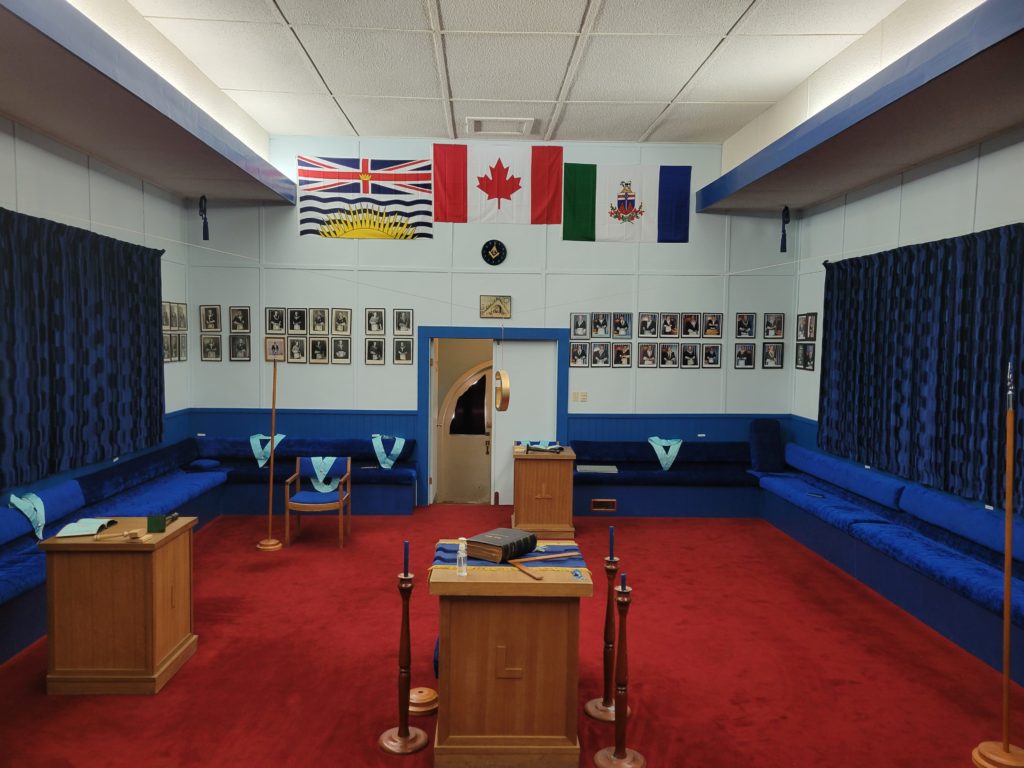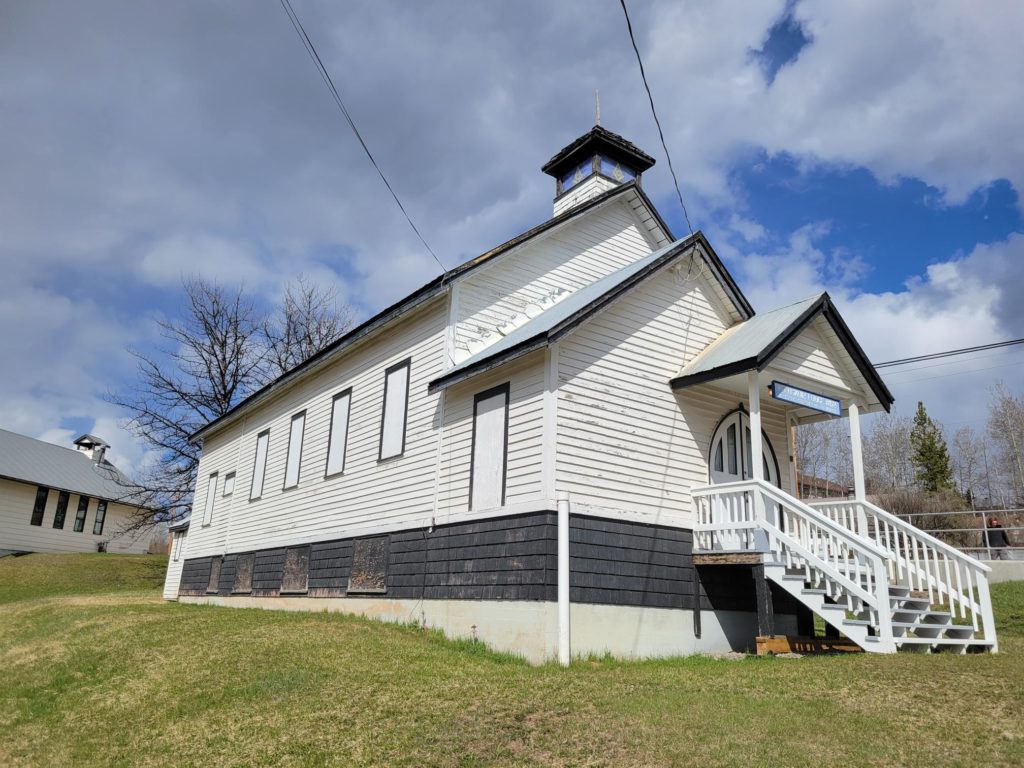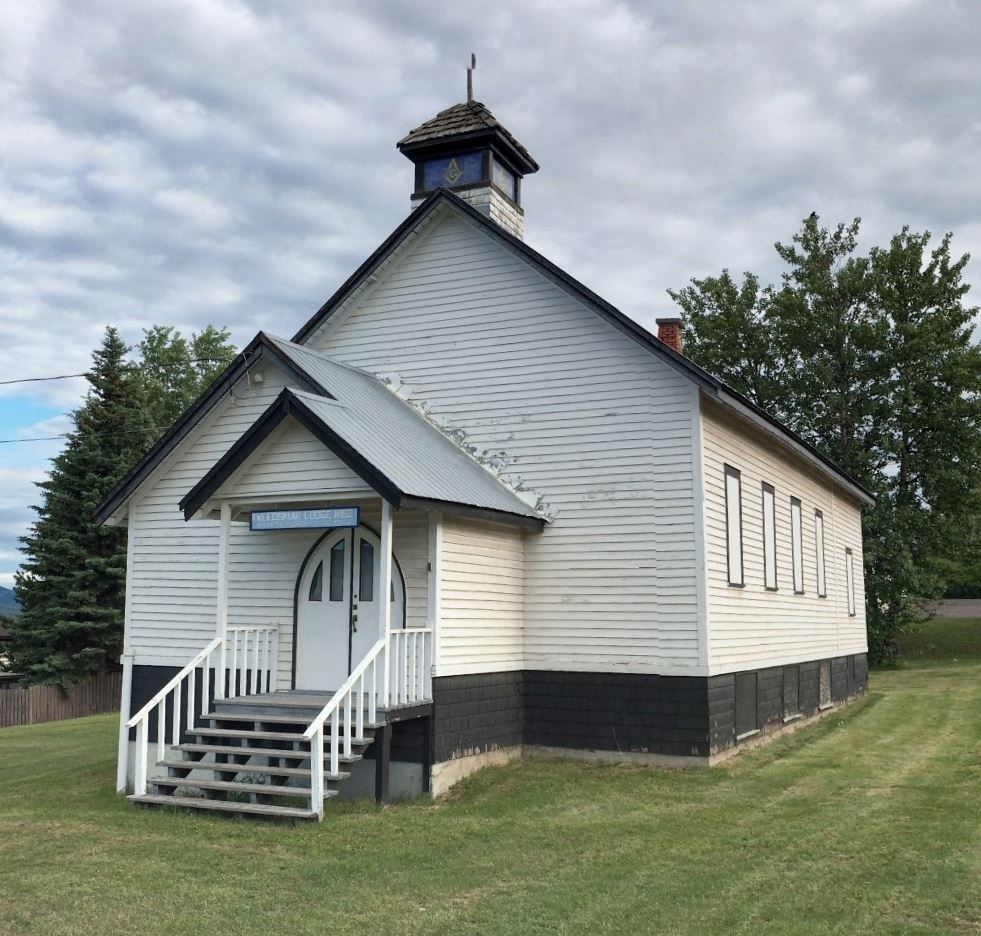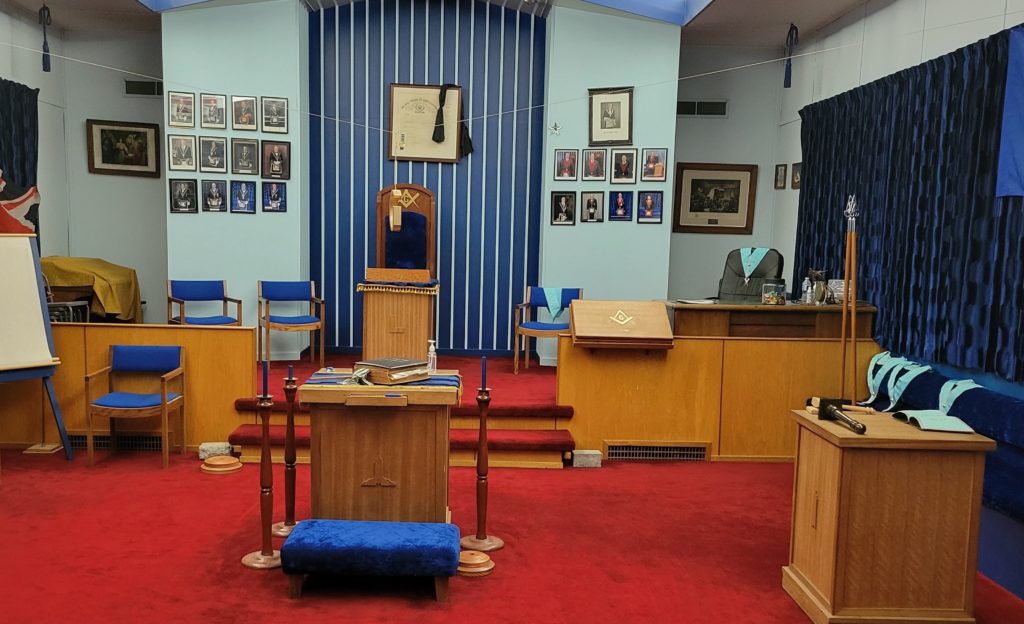
- Details
- prev
- next
- Share
- Get directions
- prev
- next
About the Lodge
The building we presently occupy was purposely built as a Presbyterian Church in 1921, with Rev. J.R. McCrimmon as minister. In 1925, the Methodist and Presbyterian congregations in Canada came together to form the United Church of Canada, with the church building being renamed St. Paul’s Union.
The building was lit with gas lamps during those days, until one Sunday sermon, when the minister, tired of pumping and filling gas lamps, preached a sermon on light. The eventuality of that sermon was a line from the village light plant, where-in light was provided to the church for one hour on Sunday evenings.
Building expenses were enhanced, in late 1930’s, by profits from the local newspaper, The Advance, which was produced and published by Rev. Frank Bushfield and his wife. In 1943 the building was raised, and a basement dug out by hand with volunteers from the congregation. A concrete basement was poured, again by hand, providing a much needed kitchen and common room for after-church functions and community functions.
It was around 1973 that this building was purchased for $17,000 by the Tweedsmuir Holding Company and the brethren of Tweedsmuir Lodge No.152. The building has had numerous upgrades over the years, with the back room on the main floor extended to match the dimensions of the original structure. The interior of the Lodge room was redone, the basement insulated and upgraded.
The old bell tower of the church was refitted with glass displaying the Square and Compasses on all sides, and a light installed. The bell tower is illuminated during lodge meetings. This building, a landmark in Burns Lake, is 103 years old at the writing of this paper.
Prior to the purchase of this building, the brethren of Tweedsmuir Lodge would meet in a room above the Home Hardware building. The history of Tweedsmuir Lodge in the Grand Lodge history records that the lodge received its constitution at “Brown Hall” in 1954. As Home Hardware was owned by Freemason, Jack Brown (Sr.), it seems that Grand Lodge applied the more notable name of “Brown Hall”, as the meeting place for the constitution of the Lodge. The Lodge formally met in the Anglican Church for just a few years before moving to our present location.
Location
3rd Avenue, Burns Lake, British Columbia V0J 1E1, Canada
Province
Lodges that meet here
Tweedsmuir Lodge No. 152
The Grand Master of British Columbia, Most Worshipful Brother Laurence Healey, issued dispensation for the creation of a Lodge in Burns Lake, personally instituted by him on March 13, 1953. It was on June 19, 1954, that Grand Lodge ordered a Warrant of Constitution for Tweedsmuir Lodge No.152. On August 23, 1954 the lodge was Constituted at Brown Hall (upstairs of the Home Hardware building), taking its name from the 15th Governor General of Canada, John Buchan, 1st Baron Tweedsmuir of Elsfield.
John Buchan, 15th Governor General of Canada
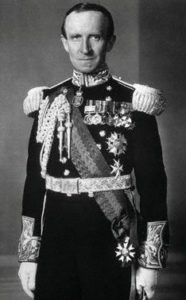
The first Worshipful Master of Tweedsmuir Lodge was Worshipful Brother Charles W. Beck. The Lodge adopted the Canadian Ritual for its work, with regular meetings held for a period of time in an upstairs room of the Home Hardware building. The Home Hardware building was owned, at the time, by a member of the Lodge, Jack Brown (Sr.). In 1973, the Tweedsmuir Lodge brethren pooled their resources and, through the Tweedsmuir Holding Company, were able to purchase the former United Church at this location for $17,000.
For many years, and until their dissolution, the Burns Lake chapter of the Order of the Eastern Star met in the Lodge hall. The Canadian Cancer Society was a welcome tenant, free of charge, in the basement common room, until their volunteers departed for more accommodating premises that did not include three flights of stairs.
Over many years, the lodge has made contributions to the community in a variety of ways. A sizeable contribution was made for the purchase of a new piano for the local music festival, and further monies were distributed to the local Arts Council to assist in their efforts to bring performers to the area for monthly concerts. In 2012, Tweedsmuir Lodge extended its charity endeavours in response to the explosion and fire that destroyed Babine Forest Products by contributing to the community food bank and the Elizabeth Fry Society.

